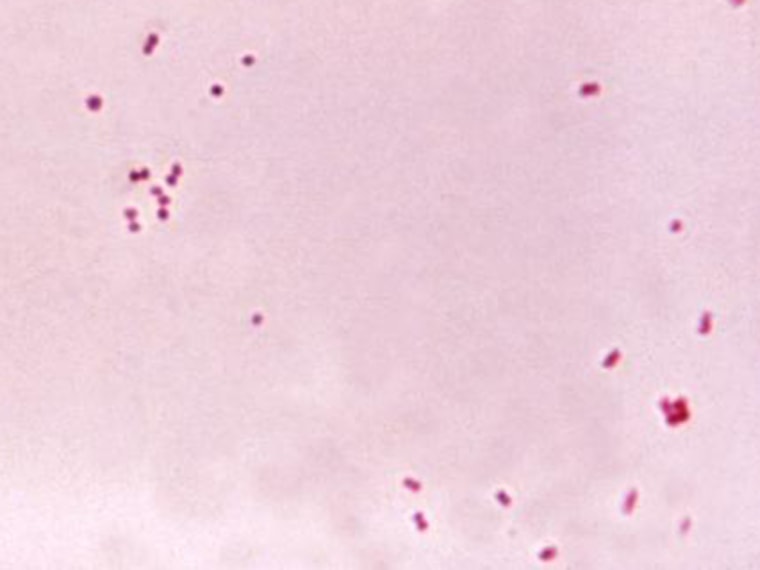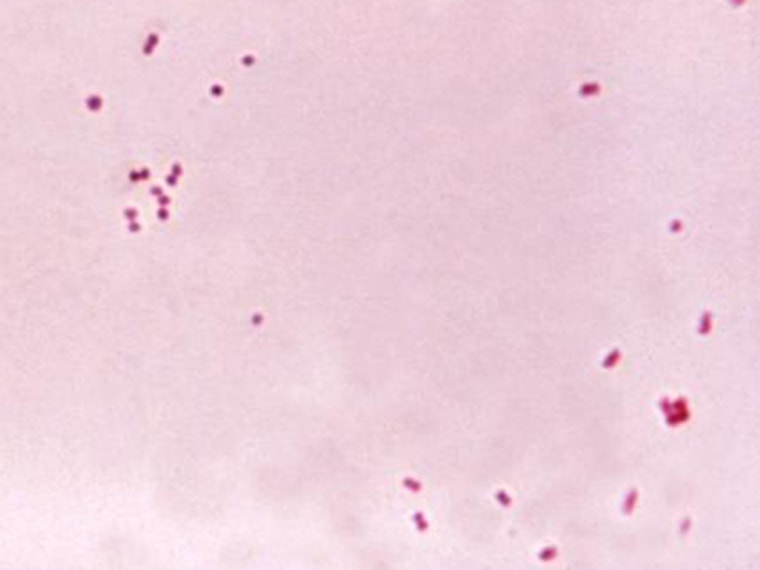
A new case of meningitis was reported at a New Jersey university late Wednesday, raising worries that an outbreak of the potentially deadly infection may have spread beyond Princeton, where seven people have been sickened since March.
An administrator at Monmouth University in West Long Branch, N.J., was hospitalized after becoming "gravely ill," officials at the school reported in a notice to the campus community Thursday. The school, which has nearly 4,800 undergraduate students, is located about 45 miles from Princeton University.
Across the country, health officials in Santa Barbara, Calif., confirmed an outbreak of three cases of bacterial meningitis since Nov. 11 at the local University of California campus.
Officials on both coasts say there's no apparent link in either situation with the Princeton cases, but they remain under investigation.
At Monmouth, there's no confirmation yet about what strain of bacteria infected the employee, or whether it's serogroup B, which sickened the six students and a student visitor in the Princeton outbreak, according to Petra Ludwig Shaw, a Monmouth spokeswoman.
At the University of California at Santa Barbara, confirmed cases include two male students who became ill on Nov. 11 and Nov. 13 and a female student who fell ill on Monday. The cases are all confirmed to be the B serogroup, local health officials said. But they're not the same strain involved at Princeton, added Dr. Tom Clark with the Centers for Disease Control and Prevention.
"The strains in the two UCSB cases we’ve tested are the same as one another. They are different from the Princeton outbreak strain," Clark said. "The risk of spread of an outbreak to two locations is very low."
However, concern about the ongoing outbreak is so great that Princeton officials this week agreed to import and pay for a vaccine that's not approved in the United States to start inoculating students against the infection that kills at least 1 in 10 who contract it. The current U.S. vaccines recommended for college students cover four serogroups of the bacteria that cause illness -- A, C, Y and W-135 -- but not serogroup B.
Princeton officials took action Monday after CDC officials requested an IND, or investigational new drug application, to allow use of Bexsero, a vaccine approved in Europe and Australia. Since the outbreak, visits to the student health center have risen about 10 percent, a Princeton spokesman said.
That IND will apply only to Princeton, said Jason McDonald, a CDC spokesman. If another state or local health department declares there's an outbreak, CDC and the affected organizations would decide what steps to take.
No IND similar to the one at Princeton has been requested for the UCSB campus because CDC doesn't recommend it, said Susan Klein-Rothschild, a spokeswoman for the Santa Barbara County Public Health Department.
"They're giving us guidance," she said. "This may change with time or it may not."
About 300 students who were close contacts of the ill kids have received antibiotics to prevent illness, Klein-Rothschild said. Nearly 22,000 students are enrolled at the school north of Los Angeles.
Bacterial meningitis is a dangerous infection of the protective membranes that cover the brain and the spinal cord, known as the meninges. It is spread through respiratory droplets or secretions exchanged through close contact such as coughing or kissing.
Cases have dropped sharply in the U.S. in recent years, but between 800 and 1,200 are typically reported annually. Last year, only 500 cases were reported in the U.S., Clark said. Most cases in America are caused by the C or Y strains of bacteria, the CDC says.
The worry is that between 10 percent and 12 percent of those who get the fast-moving infection die, and about 20 percent of those who recover can wind up with severe side effects including deafness, mental retardation and limb amputations, according to the CDC.
Early symptoms of meningitis can be mild and resemble minor illnesses like a cold or flu: fever, headache, body aches, fatigue. But they can quickly escalate to include stiff neck, nausea, vomiting, confusion and sensitivity to light. After the disease has taken hold, a rash may appear. Death can occur very quickly — within hours or days.
But because the bacteria are not spread through casual contact, Monmouth University officials said the risk of infection is "quite small" in the general community. They would not identify the gender or name of the ill employee. Health officials believe the risk is limited to people who came within three feet of the infected person for eight hours or more at a time, school officials said.
"The University is working closely with the public health officials to reach out to any individuals who may be at risk for infection," officials said in a statement.
JoNel Aleccia is a senior health reporter with NBC News. Reach her on Twitter at @JoNel_Aleccia or send her an email.
